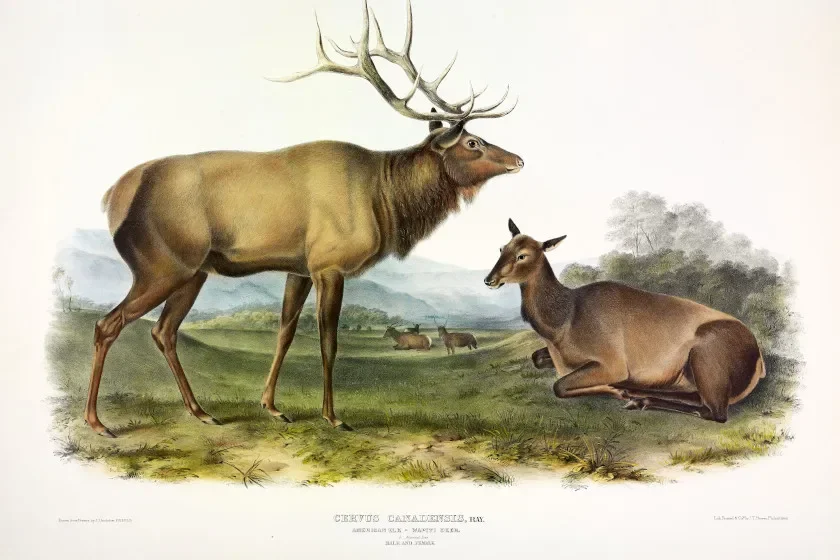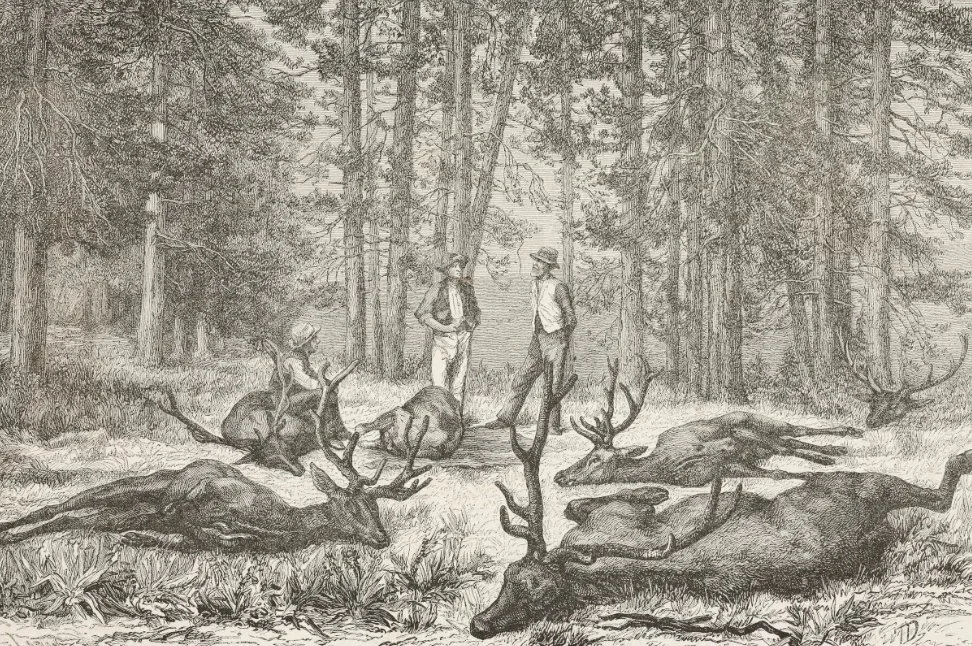Eastern Elk
(Cervus canadensis canadensis)
Elk, also known as wapiti, are the second-largest members of the deer family, surpassed only by the moose. Their range extends across Central and East Asia as well as North America, and the species includes multiple subspecies throughout that distribution. The eastern elk was the easternmost subspecies in North America, historically inhabiting the forests from Canada south to Georgia and west into the Midwest.
Following European colonization, the growing population of the newly formed United States created a high demand for food. As attention turned to native wildlife, market hunting expanded to supply this demand. This unregulated commercial hunting quickly devastated populations of large herbivores, game birds, waterfowl, and even turtles. The eastern elk was among the most severely impacted and could not reproduce fast enough to withstand the exploitation.
In Pennsylvania, elk disappeared from southeastern parts of the state by the turn of the 19th century, and from the southwestern corner of the state and the Poconos by the 1840’s. The Allegheny Plateau served as one of their final strongholds, not only in the state but across Eastern North America, but even there they were not safe. The last eastern elk was shot in Pennsylvania in 1877 and was officially declared extinct by the U.S. Fish and Wildlife Service in 1880.
In 1895, the Pennsylvania Game Commission was established, in part to restore species that had been wiped out in the state by unregulated market hunting, including white-tailed deer and wild turkeys. Although the eastern elk was extinct, Yellowstone National Park in Wyoming was facing the opposite issue with its Rocky Mountain elk population exploding after wolves and other predators had been eradicated from the region.
To address both situations, the Pennsylvania Game Commission relocated Rocky Mountain elk from Yellowstone and surrounding areas to Pennsylvania between 1913 and 1926, allowing them to fill the ecological role of the extinct eastern elk. Today, elk populations can be found in Elk, Cameron, Clinton, Clearfield, and Potter counties and although the eastern elk is gone, its legacy lives on through the thriving herds that now roam Pennsylvania’s northern counties.



